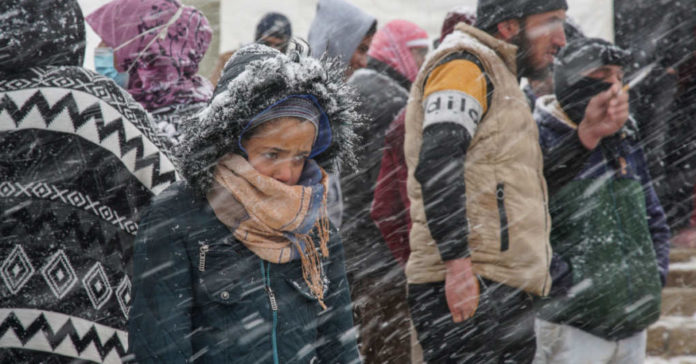
Following the departure of the Americans, the people of Afghanistan have been living under Taliban rule. With their presence sweeping across the country as the Americans pulled out and attempted to take as many of their allies as possible, the botched operation left billions in US assets behind for the Afghan Army was set to take over.
Instead of taking over and fighting back as they were expected to do, the Afghans instead simply laid down their arms or ran the other way. This allowed the Taliban to not only take over control of the country, but they could now do it with an iron fist and with resources that far surpassed the tools they already had. Naturally, the people quickly folded and handed back over the peace and security the US had been building.
This decline wasn’t surprising given their decision not to fight with all their might, and now, they are paying a tremendous price for their inability to stand up.
As a brutally cold winter hits the region, the prices have regularly plunged as low as -21 Celsius (-5.8 Fahrenheit) in Kabul. Other parts of the country have reported even colder temps, especially on the mountain tops and in some valleys that collect little if any direct sunlight in the winter. As a result, 20 people have frozen to death.
The city of Baghlan has seen -11, and many of the city’s poorest residents are stuck with an impossible choice: do they freeze to death, or do they starve? Shah Ibrahim Shahin spoke with Al Jazeera about the conditions he and 14 members of his family, including 10 kids, are living in. “We have one bukhari [a traditional coal heater]; we purchased some coal at the start of the winter, but in this [cold] weather, our supply is almost over, and we cannot afford any more.”
For years, this 54-year-old has worked as a taxi driver. With the Taliban unable to get the economy going in 18 months, Shahin has been unable to work for nearly a year. As it stands the country has been isolated internationally, and it has led to rampant poverty and a tremendous humanitarian crisis. His story of a folded business due to no income for gas to drive the cab and nobody to take it is one heard across the land.
“Two of my sons work as day laborers, but they don’t make more than 150 Afghanis ($1.68) a day; not even enough to buy food for the day. It has been months since we tasted a fruit or meat.” With their location at the foothills of the Hindu Kush mountains they have a bit of optimism for the spring, should they live to see it. “We are happy it is snowing, it is a gift from God and it will be useful for wells and farmers, but we are very concerned about how will we stay warm as the temperatures fall. We can barely afford to buy food.”
A 25-year-old Afghani woman, who remained anonymous due to fear of Taliban reprisal, spoke about the struggle she and her family have gone through after the Americans departed. “If we buy coal and wood, then we won’t be able to buy food. The money my husband sends us is not sufficient to even cover basic requirement.”
Before the rise of the Taliban, her husband was a member of the Afghan Army. When they rose to power, he was forced to flee to protect his family as well as himself. “After the fall of Kabul, my husband was hunted by the Taliban and had to escape to a neighboring country. For a while, we survived on his savings, and then on charity. He sends us money when he has work, but we can’t afford a bukhari this winter.”
This extreme cold is something many Afghanis have never seen before and are likely to not see again in their lifetime. While the UN and numerous charities would be happy to help the poor, they know the Taliban will not allow the relief. Instead, they will take it for themselves.
Makes you wonder what good we did besides killing Osama bin Laden.














